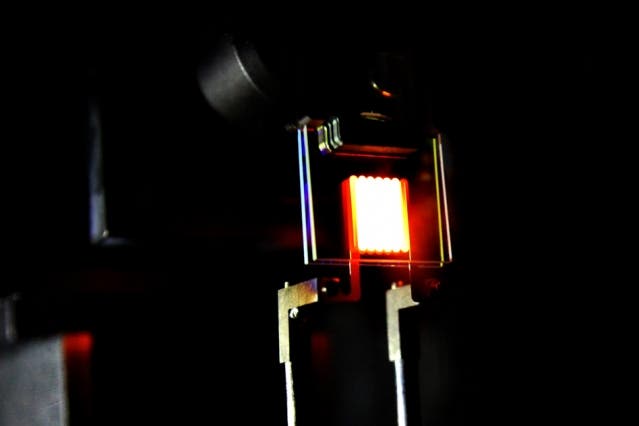Though incandescent light bulbs have been used to light homes for more than a hundreds years, and still do so in most of the world, these are ridiculously inefficient. This has prompted many governments to completely phase-them out, among which the E.U., Australia, Canada, Russian, as well as the United States. Their place has been taken over by fluorescent bulbs (CFLs), and the even more efficient LEDs. A team at MIT, however, has a bright idea that might revamp the unfavored bulbs. They’ve designed a new sort of incandescent bulb that uses a photonic crystal to recycle the waste energy. The resulting bulbs could be more power and light efficient than anything on the market right now.

A lot of heat for a bit of light
The incandescent lamp was the second form of electric light to be developed for commercial use after the carbon arc lamp. It is the second most used lamp in the world today behind fluorescent lamps.
In 1879, Thomas Edison and his researchers at Menlo Park were experimenting with various filaments like carbon, then platinum, before finally returning to a carbon filament. By October 1879, Edison’s team had produced a light bulb with a carbonized filament of uncoated cotton thread that could last for 14.5 hours. They eventually hit the jackpot when they lit a bulb that used a carbonized bamboo filament. It could last over 1200 hours.
Though tweaked and upgraded, the incandescent bulb’s design has changed little since Edison’s days. Incandescent bulbs work by sending electric current through a resistive material. Naturally, this resistive filament will generate a lot of heat. Atoms in the material absorb the energy, which excites electrons around the atoms temporarily jumping an orbit further from the nucleus. Inevitably, it collapses to a lower orbital ejecting energy in the form of a photon.
Heat is constantly emitted around us. There’s no object that doesn’t radiate. We can’t see heat though, not until it reaches just the right intensity and just the right wavelengths. In an incandescent bulb most of the heat energy (95% and greater) is emitted in the infrared spectrum which is just below visible light. The rest of the energy (less than 5%) can be actually seen as it’s emitted in the visible spectrum. This is a basic explanation, and it helps to see an incandescent light bulb as a radiator, that just happens to shine some light. It’s definitely as inefficient as it sounds. LEDs, on the other hand, are at least 10 times more efficient because they work by producing light — heat is just a byproduct.
A paper published in Nature Nanotechnology details a novel way to make way with this horrendous inefficiencies, and put the incandescent bulb back on the map. Their design involves a typical heated metal filament, heat losses and all. The catch is that it’s surrounded by a specially crafted material that absorbs the infrared energy and emits it back to the filament where its re-absorbed and re-emitted.
The material is a photonic crystal made out of abundant elements, in other words cheap. It’s basically made out of a stack of thin layers, deposited on a substrate. “When you put together layers, with the right thicknesses and sequence,” MIT postdoc Ognjen Ilic explains, “it’s possible to get very efficient tuning of how the material interacts with light.”
“The results are quite impressive, demonstrating luminosity and power efficiencies that rival those of conventional sources including fluorescent and LED bulbs,” says Alejandro Rodriguez, assistant professor of electrical engineering at Princeton University, who was not involved in this work. The findings, he says, “provide further evidence that application of novel photonic designs to old problems can lead to potentially new devices. I believe that this work will reinvigorate and set the stage for further studies of incandescence emitters, paving the way for the future design of commercially scalable structures.”
Besides power efficiency, light sources are also rated by luminous efficiency — a measure of how well a light source produces visible light. It is the ratio of luminous flux to power. A conventional incandescent luminous efficiency is between 2 and 3 percent, LEDs stand at about 5 to 20 percent depending on the manufacturing quality. Theoretically, the photonic crystal incandescent bulbs could reach up to 40 percent.
In the lab, though, the team managed only to reach 6.6 percent efficiency. This is a preliminary result, however, and with further tweaking it could be dramatically raised. Already, it seems better than most CFL and LEDs.
The MIT researchers claim this “light recycling” method can be applied to other thermal systems, such as thermo-photovoltaics. These devices absorb energy from the sun or some other source then emit this heat radiation as light which is picked up by a conventional photovoltaic (PV) system. The lighting applications, for now at least, seem to be most promising. Who would’ve thought we would write about incandescent light research in 2016. Just gives to show, I guess, that there is still a massive treasure buried in seemingly obsolete tech.


